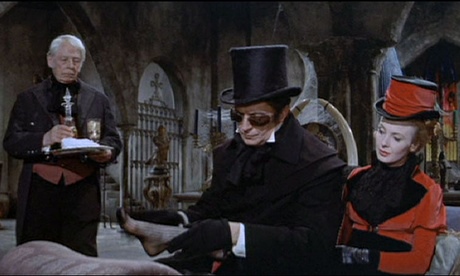
One of the most prolific film-makers of all time, Roger Corman is still at work in his 89th year churning out low-budget exploitation films for TV and such outlets as Netflix. His peak decades were the 1960s and 70s, when he produced the first films by Francis Coppola, Monte Hellman and Peter Bogdanovich, directed the best of his 50 films and gave Jack Nicholson his earliest roles. Most notable are Corman’s eight elegant adaptations of Edgar Allan Poe stories, seven starring Vincent Price at his baroque, barnstorming best, six of them in this box. Five were made in Hollywood and four scripted by the ingenious Richard Matheson (author of The Incredible Shrinking Man and Spielberg’s Duel). The sixth and final one, The Tomb of Ligeia, based on the first filmed screenplay by Robert Towne, was shot in Britain because it was cheaper to work here.
Corman believed the Poe series was running out of steam and decided this farewell to gothic horror would feature the usual ingredients – a haunted house, a tormented hero, a dual personality, a family curse, a demonic cat – but would be more naturalistic, less sepulchral. So instead of dark-lit studio sets in exotic places, it’s rather beautifully located in the 19th-century English countryside, mostly around the ruins of a medieval castle in Norfolk and an adjoining priory. The impressive interiors are the sets erected the previous year at Shepperton for the opulent Burton-O’Toole costume picture Becket.
Price plays a deranged aristocrat pursued by his raven-haired late wife (whom he buries in a pre-credit sequence), and ill at ease with her blond successor, both played by Elizabeth Shepherd. The dark humour of the earlier pictures is absent, and it’s less a conventional horror story than a tale of romantic obsession hinting at Jane Eyre and anticipating Rebecca. The widescreen Technicolor movies in this box belie their modest budgets and are a credit to their cinematographers’ skill, and in addition to a frank and amusing commentary by Corman himself each disc has a variety of extras, among them a perceptive essay by Paul Mayersberg, who got his first break assisting Corman on Ligeia, an hour-length documentary on Peter Lorre, and an amusing piece by Anne Billson on cats in horror flicks.

